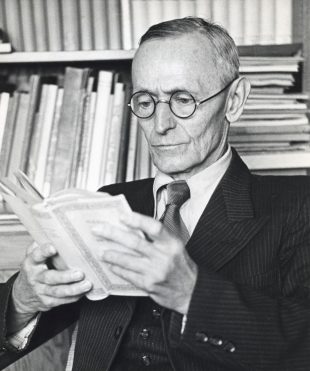[Book review] Identity in Hermann Hesse’s Novels
 Demian is a semi-autobiographical story written by Hermann Hesse, published in 1919. The novel is set in Germany, in the decade preceding World War I, and tells of a troubled adolescent’s arrival at self-awareness. Emil Sinclair is his own narrator, describing his personal journey towards a genuine understanding of his inner self after growing up in a conservative Christian family. And Max Demian, his schoolmate, is the one who first opens Sinclair’s mind to unconventional ways of thinking, ultimately leading him to inner revelation.
Demian is a semi-autobiographical story written by Hermann Hesse, published in 1919. The novel is set in Germany, in the decade preceding World War I, and tells of a troubled adolescent’s arrival at self-awareness. Emil Sinclair is his own narrator, describing his personal journey towards a genuine understanding of his inner self after growing up in a conservative Christian family. And Max Demian, his schoolmate, is the one who first opens Sinclair’s mind to unconventional ways of thinking, ultimately leading him to inner revelation.
Across his years of grade school, high school, and university education, Sinclair struggles to find his identity in the immoral world and is always caught between the question of good and evil. “All I wanted was to try and realize whatever was in me. Why was that so difficult?” he said when talking of the research he put into finding about the deepest corners of himself. The novel ends in the progression of World War I, and both Emil and Max have been wounded in battle.
Throughout a seemingly one-dimensional plot, Demian applies the analytic concepts of Jungian psychoanalysis in a strongly symbolic narrative drawing from Christian theology, Nietzschean philosophy, and Eastern mysticism. But more specifically, the words grew out of Hesse’s experience of psychoanalysis with Carl Jung and J.B. Lang. During the time it was published, Demian happened to strike a chord with Germany’s postwar youth; those who felt the novel expressed their common search for personal identity. Hesse’s novel also resonated with a generation of youth in the United States between the 1960s and 70s. By format, Demian could be classified as a Bildungsroman—meaning “education novel”—which is a genre that focuses on the psychological and moral growth of the protagonist from youth to adulthood. This type coming-of-age story was popular in Germany’s romantic period.
The author, Hermann Hesse (1877-1962), was a German novelist and poet who published his first book, a collection of poems, in 1899. During World War I, he lived in Switzerland where he wrote denunciations of militarism and nationalism, and in 1923, he acquired Swiss citizenship. Hesse is frequently described as a “crisis writer”; in fact, a deepening sense of personal crisis led him to receive psychoanalysis. The main theme of this work is the individual’s effort to break out of the established modes of civilization so as to find their own essential spirit and identity. Hesse’s most famous novels to date are Peter Camenzind (1094), Gertrud (1910), Demian (1919), Siddhartha (1922), Steppenwolf (1927), Narcissus and Goldmund (1930), and The Glass Bead Game (1943). In 1946, Hermann Hesse was awarded the Nobel Prize for Literature in 1946.





















































